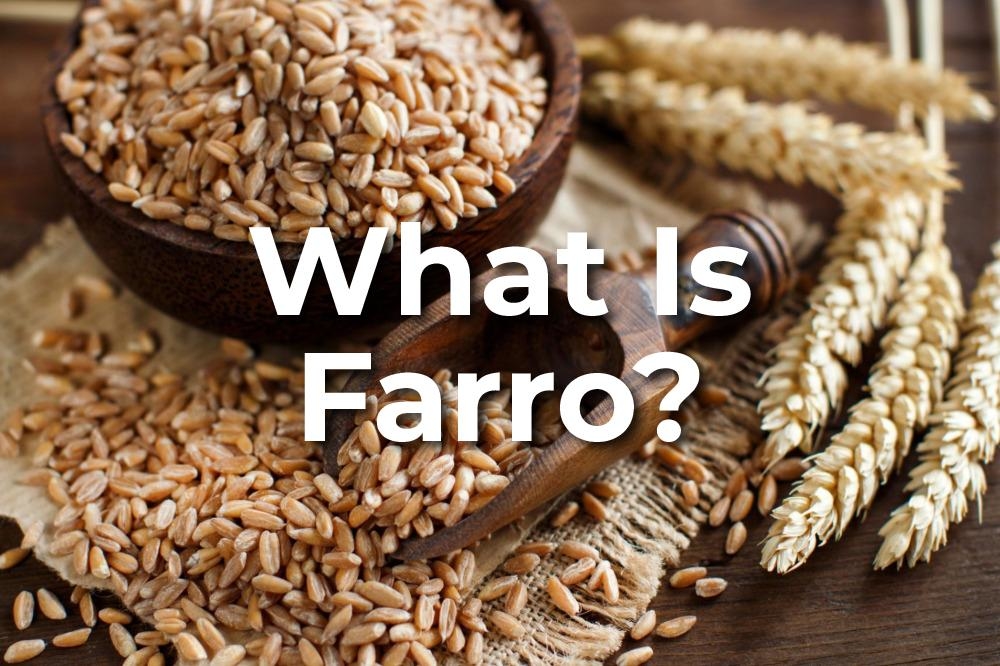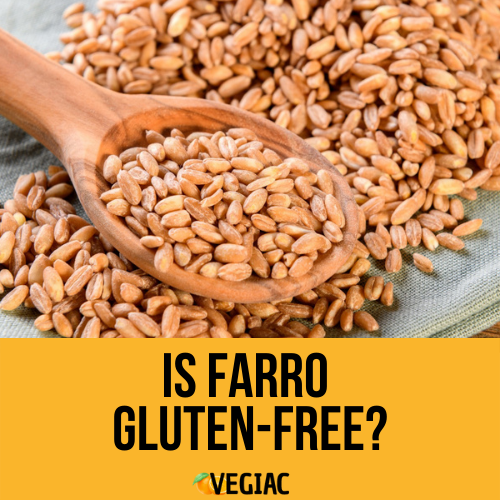Farro is one of the oldest cultivated grains in the world and has a nutty flavor. It is very nutritious, having lots of essential nutrients that the human body needs. If you’re not allowed to eat gluten and you’ve wondered if farro is gluten-free, the simple answer is “no,” it is not gluten-free. That being said, the structure of the gluten in farro is a bit different than it is in other types of wheat and grains, so some people on a gluten-free diet find they can eat farro without any negative side effects.
What Is Farro?

Farro is an ancient grain that has a rice-like texture and a yummy taste. It’s been around for thousands of years and is filled with protein, fiber, antioxidants, and numerous vitamins and minerals. It originated in Mesopotamia and actually consists of three different grains, including einkorn (farro piccolo), spelt (farro grande), and emmer (farro medio). In the United States and Europe, it is most commonly made with emmer wheat. Just like rice, farro is sold dry and you cook it in water until it’s chewy and soft.
If you’re wondering what farro looks like, it is similar to wheat berries when it’s uncooked. Once it’s cooked, farro looks very much like barley. It is a small grain that is light brown in color, and it has an outer layer of bran that is very noticeable. If you’re trying to replace grains such as rice, barley, and quinoa, farro is a great alternative because it is so versatile. In fact, you can eat it alone or put it in dishes such as salads, soups, and stews.
Keep in mind that since farro is a type of wheat, it is likely not a good idea for you to eat it if you cannot eat gluten. If you look at the list of ingredients, it will mention either emmer, spelt, or einkorn, all of which should be avoided for people who suffer with Celiac disease or who can’t tolerate gluten for other reasons. If you think you might be able to tolerate farro because of its different gluten structure, the best thing for you to do is start by eating a small amount of it and see how your body reacts to it.
Read More >> Are Grits Gluten-Free?
What’s So Great About Farro?
If you’ve decided to avoid rice and other refined grains but need a great-tasting, healthy alternative, farro is definitely something to consider. Once people try this grain, they usually love it. If you’re curious about some of its many benefits, here are five of them to consider:
1. It Is Very Healthy
Farro is very nutritious and has fiber, magnesium, some B vitamins, and zinc. For a one-fourth-cup serving of farro made from emmer, here are the statistics:
- 170 calories
- 34 grams of carbs
- 1 gram of fat
- 6 grams of protein
- 5 grams of fiber
- 15% of the RDI of magnesium
- 15% of the RDI of zinc
- 20% of the RDI of vitamin B3 (niacin)
- 4% of the RDI of iron
2. It Has More Fiber Than Other Grains
Fiber is one of the reasons people eat whole grains. It’s a known fact that most Americans do not eat enough fiber, yes just one cup of emmer farro can provide a total of 20% of the recommended intake for fiber. Although quinoa has about the same amount of fiber, most other grains have lower amounts, including pasta, brown rice, and couscous. The recommended daily intake for fiber is 20 to 25 grams per day for women and 30 to 38 grams per day for men, and many Americans get less than 10 grams per day.
So why does this matter? Fiber is a crucial nutrient if you want to lower your risks of both heart disease and type 2 diabetes, but it does much more than that. Fiber is known to prevent blood sugar spikes and can even help lower your LDL and your total cholesterol. In addition, fiber is good for gut health because it helps improve your digestive functions. If you have a lot of constipation or any type of tummy troubles, adding more fiber to your diet can help.

3. It Can Help You Lose Weight
Farro can help you lose weight because it is very low in calories, yet still high in fiber and protein. Some studies have shown that farro can help reduce your appetite, as well as help you feel fuller for longer periods of time. If you’re following any type of glycemic index (GI) diet plan, farro is a good grain to consume because it has a low GI number. If you consume three servings of whole grain per day, such as farro, it can even result in a lower body fat count and lower BMI.
4. It Provides a Lot of Protein
If you’re a vegetarian or simply trying to consume more plant-based foods, one of the things you’ll notice about this type of diet is that it can be difficult to consume the amount of protein you need, but eating farro makes it a lot easier. If you eat one-fourth of a cup of emmer farro, you’ll get a whopping six grams of protein. This amount is higher than both whole grain wheat and brown rice, and when you combine farro with other plant-based foods such as legumes, you can get quite a bit of protein.
Getting enough protein is important, especially if you’re not eating meat or meat products. When it comes to improving your heart health, reducing your blood pressure and cholesterol, and helping you lose weight, consuming a diet that is higher in protein can help.
5. It Is Rich in Antioxidants
Antioxidants are important because they help fight free radicals, and some of these antioxidants include carotenoids, selenium, polyphenols, and phytosterols. If you eat whole grains with fruits and vegetables, you are getting a ton of antioxidants. In fact, when it comes to polyphenols, selenium, and carotenoids, all three of the grains used with farro (emmer, spelt, and einkorn) contain these three antioxidants. Regular consumption of antioxidants has been associated with lower risks of heart disease, osteoporosis, diabetes, and even some cancers.
Is There Anyone Who Should Not Eat Farro?

Although some people believe that some people who are sensitive to gluten can still eat farro, you still have to remember that all farro comes from wheat. Therefore, farro always contains gluten. If you have Celiac disease, you should not eat farro at all. If you are just sensitive to gluten products and believe you can handle small amounts of it, you can try consuming small portions of farro and build up to larger amounts once you know you can tolerate them.
Farro comes in three varieties: whole grain, semi-pearled (semi-perlato), and pearled (perlato). The whole grain variety is the most nutritious because it retains all of its nutrients and has the most fiber. Part of the bran is removed with semi-pearled farro, and there is no bran at all in the pearled variety. The pearled and semi-pearled farro types, on the other hand, cook a lot faster than the whole grain variety does and don’t require that you soak them overnight.
In addition to several different varieties, farro also comes in different bran grades. These include long, medium, and cracked. The long and medium grades are more nutritious than the cracked. If you’re curious about how to easily add farro to your diet, below are a handful of suggestions:
- Farro salads, or you can simply add them to your favorite salads
- Farro soups, which are especially good when made with ingredients such as kale and butternut squash
- Farro breakfast bowls, where you mix farro with apples, hazelnuts, and cranberries
You can also add farro to casseroles, stews, and risottos, but you can also eat it like you would other grains such as oats, rice, and even quinoa. Unless you have Celiac disease or you’re extremely sensitive to gluten, you should be able to add small amounts of this grain to your diet without any problems.
Read More >> Is Tofu Gluten-Free?
Conclusion
Farro is a grain that has been around for thousands of years, and although it does have a totally different gluten structure than other grains, it should still be eaten with caution by people who are sensitive to gluten. Farro is a wheat and, therefore, always has gluten in it. It is made from one of three grains – emmer, einkorn, and spelt – and it is high in fiber, high in protein, and low in calories and fat. In addition, farro is filled with antioxidants and numerous vitamins and minerals, making it an extremely nutritional addition to anyone’s diet.
The good news about farro is that you can easily add it to your diet if you like. You can eat it like you do other grains such as rice, and when added to legumes, it makes a perfect protein-rich lunch or dinner. You can also add it to soups, stews, and salads, and if you look online you can even find tons of recipes that include farro as an ingredient. It is a great food to add to your diet, but use caution if you’re sensitive to gluten.

